#modern donabe
Text

Combining traditional functionality with modern features, this Seto Modern Donabe offers a minimal and timeless look to any kitchen.
#product#product design#industrial#industrial design#seto ware#donabe#modern donabe#cooking pot#japanese pot
14 notes
·
View notes
Text
[Download Book] Donabe: Classic and Modern Japanese Clay Pot Cooking - Naoko Takei Moore
Download Or Read PDF Donabe: Classic and Modern Japanese Clay Pot Cooking - Naoko Takei Moore Free Full Pages Online With Audiobook.
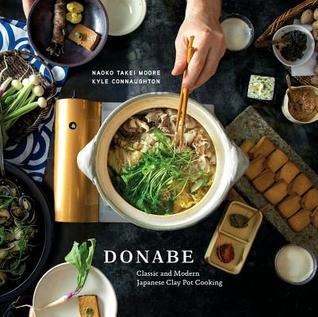
[*] Download PDF Here => Donabe: Classic and Modern Japanese Clay Pot Cooking
[*] Read PDF Here => Donabe: Classic and Modern Japanese Clay Pot Cooking
A beautiful and lavishly photographed cookbook focused on authentic Japanese clay-pot cooking, showcasing beloved recipes and updates on classics, with background on the origins and history of donabe. Japanese clay pot (donabe) cooking has been refined over centuries into a versatile and simple method?for preparing both dramatic and comforting one-pot meals. In Donabe, Tokyo native and cooking school instructor Naoko Takei Moore and chef Kyle Connaughton offer inspiring Japanese home-style recipes such as Sizzling Tofu and Mushrooms in Miso Sauce and Dashi-Rich Shabu-Shabu, as well as California-inspired dishes including Steam-Fried Black Cod with Crisp Potatoes, Leeks, and Walnut-Nori Pesto or Smoked Duck Breast with Creamy Wasabi?Green Onion Dipping Sauce. All are rich in flavor,?simple to prepare, and perfect for a communal dining experience with family and friends. Donabe also features recipes from luminary chefs such as David Kinch, Namae Shinobu, and Cortney Burns and Nick
0 notes
Text
Summer at GOHO Kaiseki & Bar
To kickstart birthday celebrations for my wife, we decided to visit GOHO Kaiseki & Bar which is marketed as a kaiseki bar hideaway showcasing contemporary Japanese cuisine highlighted by the use of 5 culinary techniques: Nama (Cutting); Niru (Simmering); Yaku (Grilling); Musu (Steaming); and Ageru (Deep-Frying). The menu changes according to the seasons and diners can enjoy the dishes with pairings featuring both alcoholic and non-alcoholic drinks.
Here’s a quick look at the beautifully presented items in this season’s summer kaiseki menu:
Sakizuke: Momo Yogurt Explosion - Spherical peach infused yogurt.
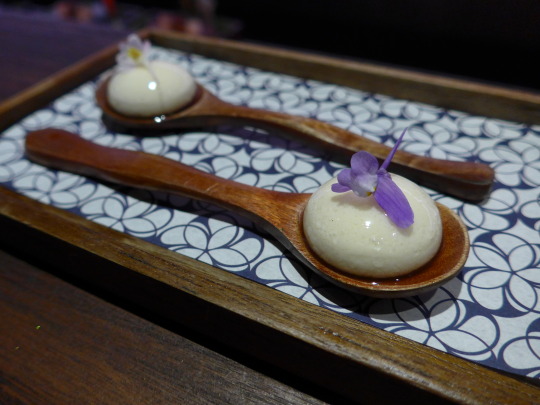
Hassun (platter): Kabocha Mochi Puff, Hotate Mousseline, Seasonal Sashimi.
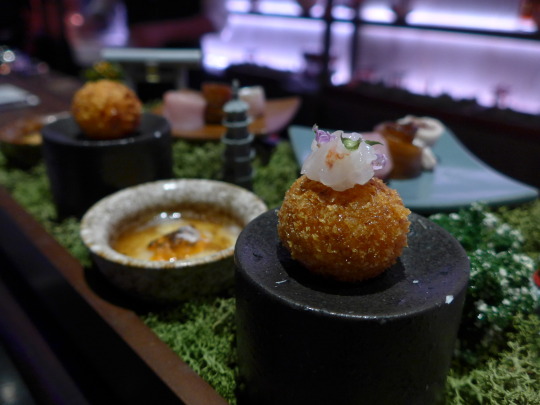
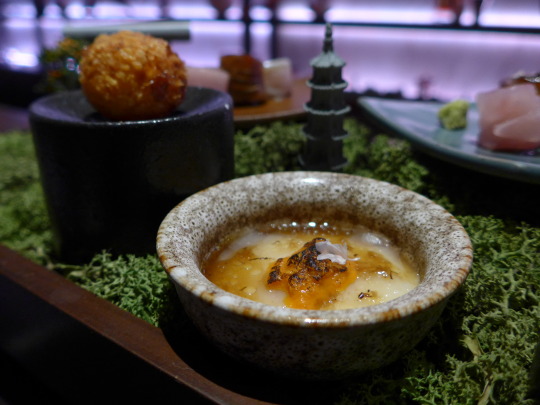

Tsukuri (raw): Japanese Wild Seabass, Shredded Nori, Yuzu Nikiri Gel.
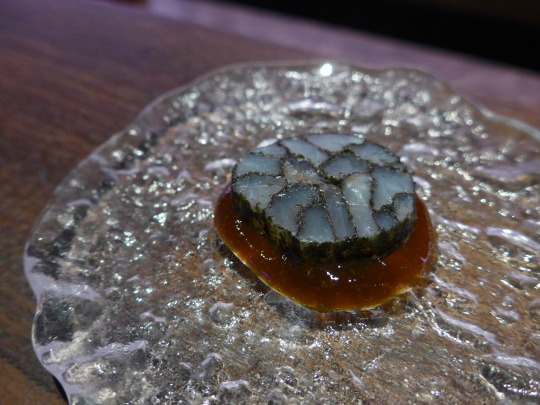
Suimono (soup): Abalone and Scallop Broth, Junsai, Crab and Tobiko Dumpling.
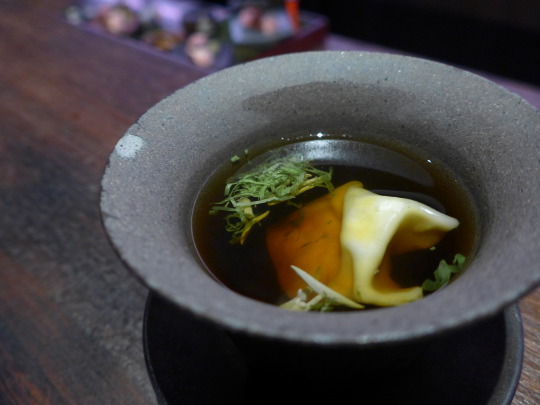
Yakimono (grilled): Wagyu Short Rib, Wild mushrooms, Shishito Pepper, Hinata Egg Yolk.
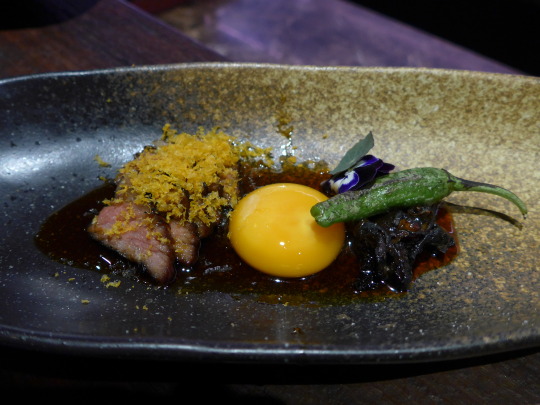
Shiizakana (poached): Miso Butter Engawa - Poached Flounder Fin, Lumpfish Caviar, Yuzu Beurre Blanc, Chive Oil.

Agemono (Fried): Shiso Wrapped Anago Tempura.
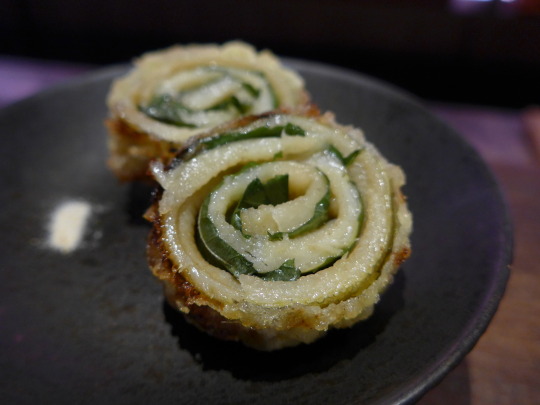
Shokuji: Seasonal Donabe.
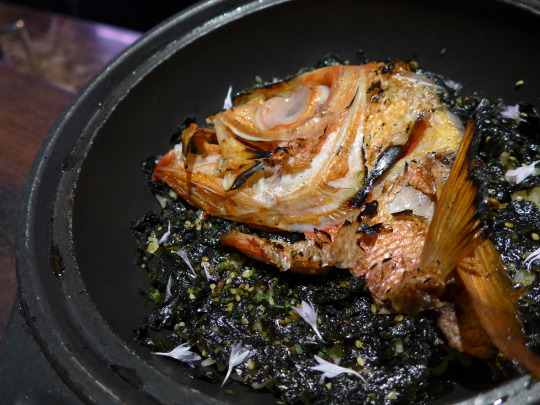
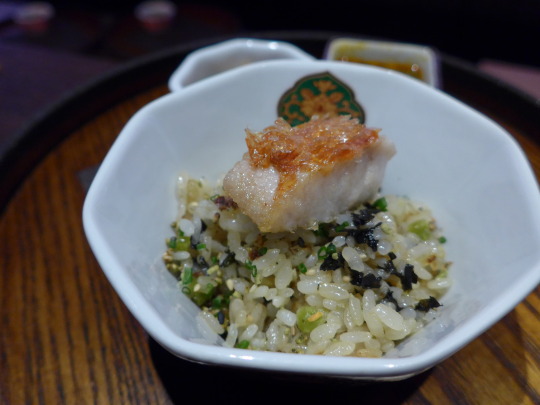
Signature: Mt GOHO - A spectacular display of artistic flair and decadent seasonal favorites featuring uni, wagyu, chutoro, ikura, and caviar. The signature dish is carefully prepared, smoked with bonito flakes, and finished with gold sparkles for a truly special culinary experience.
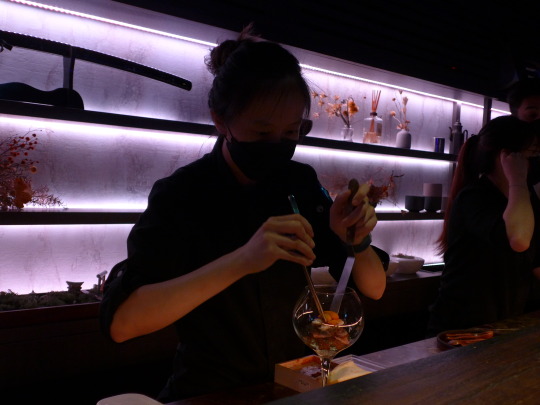
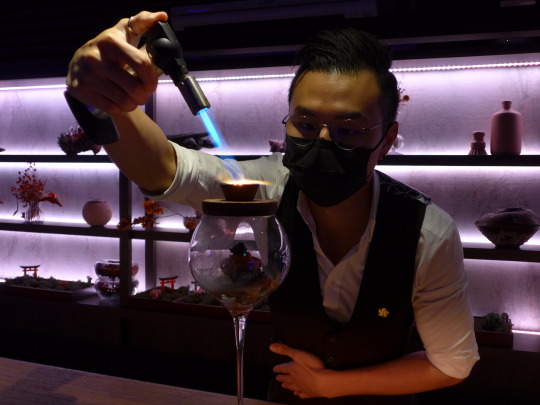


Mizukashi (dessert): Momo Sorbet - Peach Sorbet, Kyoho Jelly, Kyoho Grape, Ugo No Tsuki Bika, and Sparkling Sake.
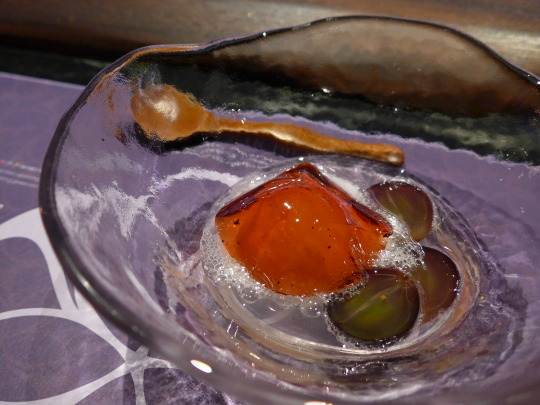
GOHO Kaiseki & Bar has exceeded my expectations with their modern interpretation of Japanese kaiseki, packaged in a highly curated dining experience, set in an intimate cozy setting, and supported by an excellent service team which is attentive and knowledgeable about each dish in the menu.
Would I return again to experience all of its seasonal menus? I most definitely will as I am surprised at every turn with my taste buds teased and tantalized throughout the session. Most importantly, I respect the restaurant’s mission to introduce kaiseki to the local community at an affordable price range to make the Japanese cuisine accessible to everyone.
If you are looking for a fun and unique dining experience, you will not be disappointed at GOHO Kaiseki & Bar.
0 notes
Link
Check out this listing I just added to my Poshmark closet: Japanese Earthware Clay Hot Pot Casserole.
0 notes
Text
[DOWNLOAD-PDF] Donabe: Classic and Modern Japanese Clay Pot Cooking - Naoko Takei Moore Book’s
Donabe: Classic and Modern Japanese Clay Pot Cooking PDF
by : Naoko Takei Moore
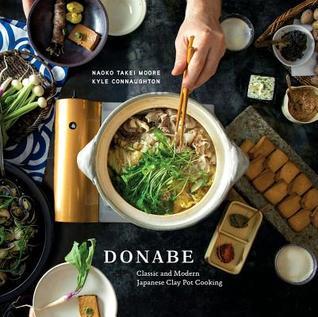
==>>DOWNLOAD OR READ THIS BOOKS<<==
Donabe: Classic and Modern Japanese Clay Pot Cooking
Read Online and Download Donabe: Classic and Modern Japanese Clay Pot Cooking. A beautiful and lavishly photographed cookbook focused on authentic Japanese clay-pot cooking, showcasing beloved recipes and updates on classics, with background on the origins and history of donabe. Japanese clay pot (donabe) cooking has been refined over centuries into a versatile and simple method?for preparing both dramatic and comforting one-pot meals. In Donabe, Tokyo native and cooking school instructor Naoko Takei Moore and chef Kyle Connaughton offer inspiring Japanese home-style recipes such as Sizzling Tofu and Mushrooms in Miso Sauce and Dashi-Rich Shabu-Shabu, as well as California-inspired dishes including Steam-Fried Black Cod with Crisp Potatoes, Leeks, and Walnut-Nori Pesto or Smoked Duck Breast with Creamy Wasabi?Green Onion Dipping Sauce. All are rich in flavor,?simple to prepare, and perfect for a communal dining experience with family and friends. Donabe also features recipes from luminary chefs such as David Kinch, Namae Shinobu, and Cortney Burns and Nick .
Donabe: Classic and Modern Japanese Clay Pot Cooking by Naoko Takei Moore
Tags: Donabe: Classic and Modern Japanese Clay Pot Cooking by Naoko Takei Moore Free download, epub, docs, New York Times, ppt, audio books, Bloomberg, #NYT, books to read, good books to read, cheap books, good books,online books, books online, book reviews, read books online, books to read online, online library, greatbooks to read, best books to read, top books to read Donabe: Classic and Modern Japanese Clay Pot Cooking by Naoko Takei Moore
0 notes
Text
Japanese Donabe Clay Pot, Seto-mono, 1450ml, Modern Design, White, Handcrafted in Japan
Japanese Donabe Clay Pot, Seto-mono, 1450ml, Modern Design, White, Handcrafted in Japan
Price: (as of – Details)
A modern and multi-functional clay pot that comes with a lid. Size is good for 1-2 people.Can be used to prepare a wide variety of dishes whether boiled, steamed, or baked.Carefully made using heat-resistant clay. Suitable for use in a microwave, gas stovetop, or oven. Dishwasher-safe.True and authentic Seto ware (Seto-mono) which is a type of traditional Japanese…

View On WordPress
0 notes
Text
Free [download] [epub]^^ Donabe Classic and Modern Japanese Clay Pot Cooking {EBOOK}

Download Or Read Ebook at:
http://read.ebookcollection.space/?book=1607746999
Download/Read Donabe: Classic and Modern Japanese Clay Pot Cooking Ebook
information book:
Author : Naoko Takei Moore
Pages : 328
Language :
Release Date :2015-10-27
ISBN :1607746999
Publisher :Ten Speed Press
BOOK DESCRIPTION:
A beautiful and lavishly photographed cookbook focused on authentic Japanese clay-pot cooking, showcasing beloved recipes and updates on classics, with background on the origins and history of donabe. Japanese clay pot (donabe) cooking has been refined over centuries into a versatile and simple method for preparing both dramatic and comforting one-pot meals. In Donabe, Tokyo native and cooking school instructor Naoko Takei Moore and chef Kyle Connaughton offer inspiring Japanese home-style recipes such as Sizzling Tofu and Mushrooms in Miso Sauce and Dashi-Rich Shabu-Shabu, as well as California-inspired dishes including Steam-Fried Black Cod with Crisp Potatoes, Leeks, and Walnut-Nori Pesto or Smoked Duck Breast with Creamy Wasabi–Green Onion Dipping Sauce. All are rich in flavor, simple to prepare, and perfect for a communal dining experience with family and friends. Donabe also features recipes from luminary chefs such as David Kinch, Namae Shinobu, and Cortney Burns and Nick Balla, all of whom use donabe in their own kitchens. Collectible, beautiful, and functional, donabe can easily be an essential part of your cooking repetory.
Donabe: Classic and Modern Japanese Clay Pot Cooking pdf download
Donabe: Classic and Modern Japanese Clay Pot Cooking audiobook download
Donabe: Classic and Modern Japanese Clay Pot Cooking read online
Donabe: Classic and Modern Japanese Clay Pot Cooking epub
Donabe: Classic and Modern Japanese Clay Pot Cooking pdf full ebook
Donabe: Classic and Modern Japanese Clay Pot Cooking amazon
Donabe: Classic and Modern Japanese Clay Pot Cooking audiobook
Donabe: Classic and Modern Japanese Clay Pot Cooking pdf online
Donabe: Classic and Modern Japanese Clay Pot Cooking download book online
Donabe: Classic and Modern Japanese Clay Pot Cooking mobile
Donabe: Classic and Modern Japanese Clay Pot Cooking pdf free download
download ebook PDF EPUB, book in english language, Download pdf kindle audiobook
0 notes
Link
Luxury Bathroom And Tiling Solutions, is one of the most innovative company in the field of small bathroom designs. We will provide you latest and modern small bathroom designs and you will be amazed to see that. For detailed information follow the link https://luxurybathrooms.ie/
Contact Details
Call : 0838383156 / 014447216
Whatsapp: 353838383156
We are available at Dublin, Blackrock, Glenageary, Loughlinstown, Bray, Rathcoole, Celbridge, Finglas, Lucan, Leixlip, Maynooth, Dunboyne, Swords, Clondalkin, Blanchardstown, Malahide, Donabate, Balbriggan, Ashbourne, Newbridge, Tallaght, Naas, Kilcock, Howth, Portmarnock, Sandyford, Dundrum, Knocklyon and everywhere in Dublin
0 notes
Text
Advanced Japanese Cuisine - Week 3
Monday was an exciting change of pace because we had a guest chef and lecturer. We were visited by Zen-Noh, an important donor of our program, who gifted our class an A4 graded Wagyu beef chuck-roll for our wagyu beef class. With them came a chef who teaches at a culinary school centered around the preparation of traditional Japanese meat dishes. We began class with a lecture on what makes Japanese wagyu beef so special. This type of beef is revered globally for its unique flavor, aroma, and texture. A majority of the cattle used in Wagyu production (98.1%) are the Japanese black variety. Each of the cattle received individual identification numbers that follow them through the entire production process. These numbers can be used to track the lineage of the cow as well as the care they received , through their production, slaughtering, and distribution. We also learned about the grading system used for the meat. Based on yield, the meat receives a letter grade (A, B, C). Based on the marbling, fat color, and meat color it also receives a number grade of 5 through 1. After this fascinating lecture that raised my respect for Wagyu beef, we moved back into the kitchen for demonstration and cooking practice.

We began with a demo on how to fabricate the different sections of the chuck roll. He broke the large primal cut down into the eye-roll, flap, neck portion, and the segment closest to the rib. The guest chef explained that although these cuts all come from the same region of the cow - they should be used in very different preparations based on their tenderness. We were then showed how to prepare the dishes for the day. We made sukiyaki, a salad of cubed and confited Wagyu beef with vegetables and dashi jelly, two variations of steak, and thinly sliced beef simmered in a rich soy-based sauce. The sukiyaki was a particularly interesting preparation. We layered thin slices of beef, leeks, shiitake mushrooms, carrots, and greens in a donabe pot and simmered them in a flavorful broth. This was then brought to the table and we enjoyed them with the raw, beaten egg as a dipping sauce. Some may get squeamish by it, but the sauce was a wonderfully rich accompaniment to the simmered foods.
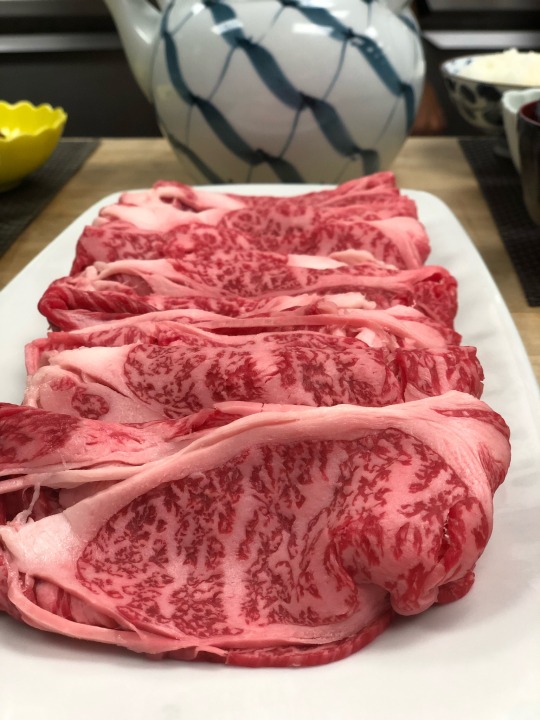
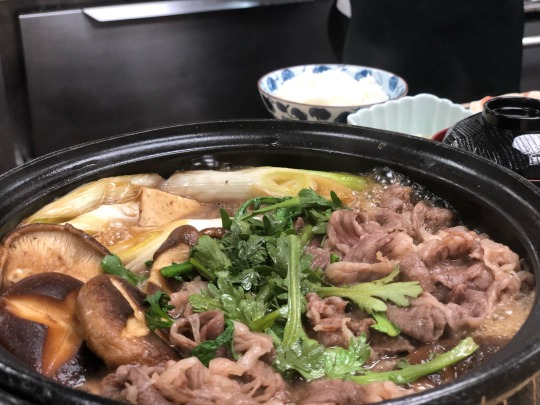

Tuesday and Wednesday we focused on preparing a menu twice again in order to further develop our skills and repetition of such. This time the menu featured a clear soup with “egg tofu”, fried bites of chicken wrapped in thinly sliced potato (using the katsuromuki technique), tofu dressed salad, tai gohan (rice cooked with sea bream), and niku jaga - everyone’s favorite Japanese soul food. Many of these techniques we have practiced prior, but sensei Murashima demonstrated the new dishes at the start of class. The “egg tofu” was similar to egg custard we had tried in a previous class. However, the mixture contained more egg to increase the firmness. We steamed this in square molds (nagashikan) for twenty minutes until set. It is important to press down the liner of the mold with chopsticks before cooking to ensure it doesn’t move while cooking. For an extra nice touch, you can torch the bubbles on the surface quickly to remove them - resulting in a perfectly smooth final product.

The fried potato dish was simple in its construction but very tasty. We lightly floured the surface of the chicken and inside of our potato sheets, proceeding to roll them up and use a skewer so they stayed put. I especially enjoyed mine with a thorough squeeze of lemon and the shishito peppers we also fried.

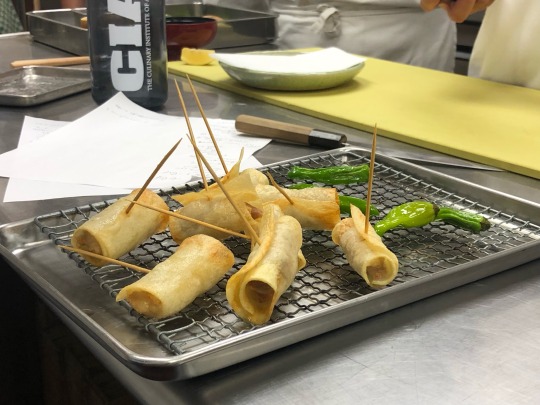
On Wednesday we prepared the same menu with minor changes and one addition. The tai gohan was cooked with a sea bream dashi that greatly increased the fresh fish flavor. We also prepared a dish popular in Tosa - katsuo tataki. Sensei Murashima showed us a traditional plating versus the modern approach we would be putting together. The traditional plate consisted of a bed of sliced onions and slices of bonito that had been lightly grilled on their exterior and coated in a mixture of minced myoga, ginger, and shiso. These slices were dressed in a bit of ponzu sauce for seasoning. He also added a few thinly sliced pieces of garlic - something we rarely use in Japanese cuisine.

The secondary version was designed like a salad, with different petite lettuces garnishing the plate. It still had the bed of sliced white onion and the minced topping as well. We also made a dressing with the ponzu and a small amount of olive oil that was a perfect accompaniment. Along with the katsuo tataki we also prepared maguro (tuna) the same way by torching it briefly. The resulting flavors blended together nicely and it was a beautiful plate at its surface.
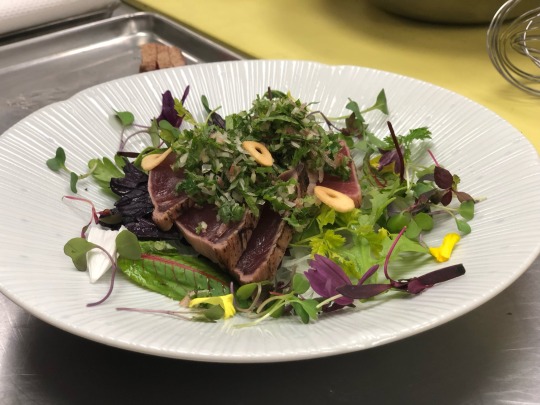
Friday marked the culmination of everything we have learned over the past six weeks - the kaiseki dinner. Among the guests were Kathy (the planner of our trip abroad), our teachers Willa and Deirdre, the donors of the program including Zen-Noh, Suntory, and Kikkoman, members of the Japanese consulate, and other important staff at the CIA. It was nice to see Kathy again after not seeing her for quite some time. It brought back fond memories of Japan while talking with her, and left me wishing I could return sooner.
My team put together the appetizer course of the dinner, the sashimi course, and the Yakimono hassun. Adrianna and I spent the morning preparing many of the vegetable garnishes while Jasper and Eubene prepped the appetizer and black cod that we would be grilling later. After a few hours had passed it was time for us to have family meal. We had a generous bowl of rice topped with oyakadon, one of my favorite meals from the class. We quickly ate dinner as we were anxious to get back in the kitchen and conclude our prep work.
Looking back on it, service was quite a blur. It was an exciting time watching the dishes come together as we had practiced and hoped. The guests were excited by all the creative and tasty flavors and thanked us many times at the end of the event. It was a bittersweet evening because we all would miss Sensei Murashima very much. I learned so much under him the past six weeks, and he will always be a cherished mentor throughout my life. I hope to see him again in the future as I continue to expand my knowledge of Japanese cuisine and culture.
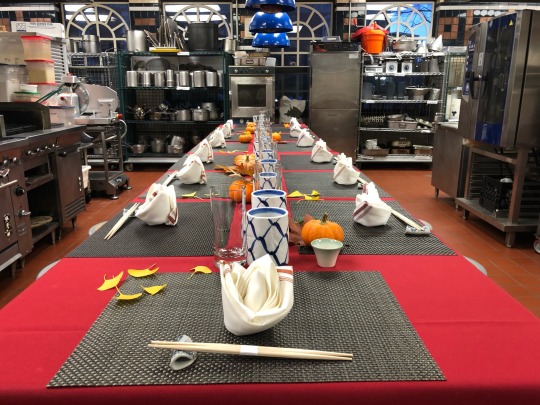
0 notes
Photo
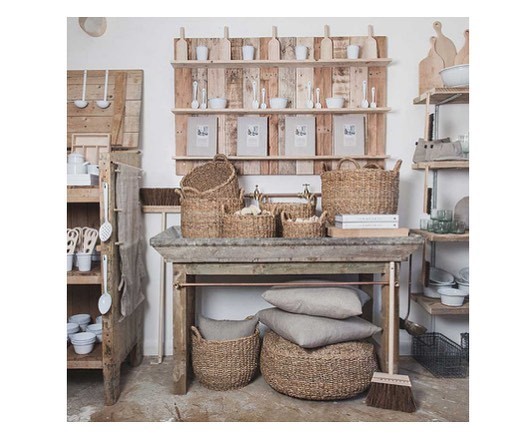
Workshop “Our intention is to present carefully curated products that contribute to uncomplicated everyday living. The store is aimed at like-minded people who appreciate our values and aesthetics.” - Ryan Kersop, Workshop. Tucked away in Brighton’s South Lanes 'Workshop' sells beautifully made tableware, candles, socks, slippers and toys. Its minimalist wood-and-white interior is just as inviting as its selection of handmade products. ‘Workshop’ is owned by Ryan Kersop and Jayson Tane-Smiler, who between them have experience in commercial finance, buying and merchandising. They opened the shop in January 2014 and since the beginning have taken a simple approach to design. ‘Workshop’ sells pieces made by independent artisans from around the world: homemade stoneware and hand-carved wooden boards, unglazed ‘Hasami’ porcelain tableware that blends Japanese tradition with modern simplicity, candles, alpaca striped socks, linen slippers, handmade dustpan and brush sets and wooden toys for children. You can pick up all kinds of unusual items that you didn’t know you needed but now can’t live without, whether that’s a pair of forged steel herb snips for the garden, a birch handle dough scraper for baking, an ox bone chutney spoon or a ‘Donabe’ cooking pot. Find your treasures at ‘Workshop’ 13a Prince Albert Street, Brighton BN1 1HE. #neonurchin #neonurchinblog #dedicatedtothethingswelove #suzyurchin #ollyurchin #art #music #photography #fashion #film #words #pictures #neon #urchin #workshoplivingbrighton #workshop #brighton #southlanes #generalstore #jaysontanesmiler #ryankersop #artisan #servewear #tableware #modernaesthetic (at workshop) https://www.instagram.com/p/Buny_nOg7Cf/?utm_source=ig_tumblr_share&igshid=1vau47welglm1
#neonurchin#neonurchinblog#dedicatedtothethingswelove#suzyurchin#ollyurchin#art#music#photography#fashion#film#words#pictures#neon#urchin#workshoplivingbrighton#workshop#brighton#southlanes#generalstore#jaysontanesmiler#ryankersop#artisan#servewear#tableware#modernaesthetic
0 notes
Photo
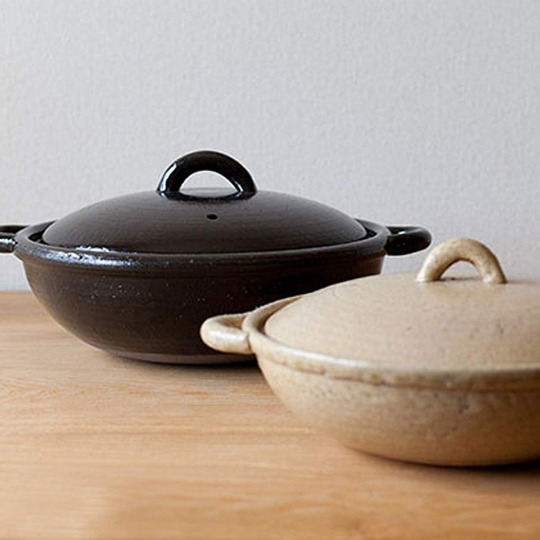
This week’s voting products are now live! Comment on your favorite to get $10 in store credit. Vote here: www.ippinka.com/product-voting/
—-
The Coarse Soil Donabe is a traditional Japanese cooking pot made from coarse soil. It features a rough finish that gives it a rustic but modern look. The clay pot slowly builds heat and retains it very well, keeping the food evenly cooked through and warm for a very long time. Perfect for tabletop cooking — make stews, soups, one-pot dishes with it and more! Made in Japan.
#product#product design#industrial#industrial design#donabe#claypot#kitchen#home#cooking#food#ippinka
4 notes
·
View notes
Text
Donabe
Passo o dia trabalhando e, tanto pela manhã quanto durante a tarde, faço uma pausa para meus exercícios e também para ler ou navegar em algo relaxante.
No jornal leio o caderno de cozinha e muitos sabores me vêm à memória.
Durante 10 anos estudei cerâmica na Fundação Mokiti Okada e lá, conheci uma amiga que, apesar de ter nascido no Brasil, é mais japonesa do que qualquer pessoa que eu conheço, a Terezinha.
Assim, no diminutivo mesmo, ela é filha de japoneses, nascida em Londrina. De Londrina veio à São Paulo para estudar, fez faculdade de letras em Chicago, administração em Tóquio e voltou ao Brasil, contratada para trabalhar na Toshiba.
Ela sempre gostou de receber e, reunindo amigos, foi nos apresentando muito da cultura japonesa.
Uma das coisas mais gostosas era comer Sukiaki, nos dias frios, depois da aula de cerâmica. Outra coisa que me vem à memória eram os pratos quentinhos, preparados em uma panela especial de cerâmica, chamada “Donabe”. Tudo feito nessa panela ficava delicioso, principalmente ensopados leves, com vegetais saborosos e fragrantes. A panela ficava sobre um fogareiro, no centro da mesa, de onde todos podiam ir se servindo.
Justamente, no jornal de hoje, mostravam um livro com as receitas feitas com essa panela. Só de olhar, senti os sabores como se estivesse comendo hoje… saudades desses pratos tão confortantes!
Então, durante a minha meditação, me dei alguns minutos para relembrar o que comi e terminei satisfeita…rs
Aqui, uma receita em vídeo, para mostrar como é essa panela…
https://www.japanesecooking101.com/mizutaki-recipe/
Aqui o link para o livro citado na matéria:
https://www.amazon.com/Donabe-Classic-Modern-Japanese-Cooking-ebook/dp/B00TCI531C/ref=sr_1_1?crid=4YIYGDNR3HZH&dchild=1&keywords=donabe+recipe&qid=1588623680&sprefix=donabe+rec%2Caps%2C321&sr=8-1
E aqui, passo a colocar o link do meu primeiro post, de onde começa a minha história, atendendo a pedidos das pessoas que me perguntaram:
https://1139andreameister.tumblr.com/post/175730059229/1139
0 notes
Text
Lauren Graham’s Week: Background Binges and Books, Books, Books
Tuesday
I’m working with the writer Jennifer E. Smith on an adaptation of her most recent YA novel, “Field Notes on Love.” Jen was the editor of all three of my books at Random House and became a close friend and now a collaborator. There’s a TV in every room in my Vancouver corporate housing, so I’m allowing myself the soothing sounds of “Grand Designs” in the background. There’s a pleasing amount of British television available here, while at home I get my fix through the apps Acorn and BritBox. I like the abundance of low-stakes dramas, Christmas programming and game shows the Brits have to offer. There’s one game show called “The Chase” that’s a trivia competition with pretty challenging questions, and another called “Tipping Point” that’s just a giant version of those coin pusher arcade games that’s unbelievably slow and not that challenging. I love both. And don’t get me started on the baking shows …
Wednesday
Speaking of baking, I love cookbooks just as reading material, not even when I’m using them for their intended purpose. There’s a sort of relish I make that I found in the “Momofuku” cookbook that’s basically diced ginger and chopped green onion and a little sherry vinegar and soy sauce, and we put it on everything. I use the“Donabe” cookbook by Naoko Takei Moore a lot too. Donabes are clay pots from Iga, Japan, and they’re great for cooking sushi rice and soups, and there are ones for grilling and steaming too. There’s a store called Toiro that carries them, and their website is full of great recipes and unique kitchen tools and Japanese ingredients. My mom was a missionary kid who grew up in Japan, which is one reason I have such an affinity for the country and its food. Chrissy Teigen’s cookbooks are also a fun read, and the last time I made her mac and cheese the boys in my house devoured it in about 10 seconds.
Thursday
My cast mate Skylar Astin and I go to SoulCycle and then to a sushi restaurant called Minami, where they make a type of sushi called oshizushi, which I’d never seen until I came here. It’s an Osaka-based style of nigiri that’s pressed in a mold and then seared on top. “It’s like cake,” Jane Levy once said. We’ve all eaten gallons of it while in town.
Tomorrow is our last day on set, and Skylar wants a recommendation for something to watch while he packs. I recommend Netflix’s “The Circle,” which I background-binged when I was on a deadline and had run out of “Grand Designs” episodes. Background binge is different than actual binge in that you can leave the house to go to the store or whatever for anywhere from 1 to 17 hours, and when you get home, you’re still pretty much up to speed. This year I think my favorite non-background binge shows in addition to “Cheer” and “The Marvelous Mrs. Maisel” was Netflix’s “Unbelievable.” It was directed so beautifully, and the cast including Toni Collette and Kaitlyn Dever was incredible. I met Merritt Wever at the Golden Globes this year and I gripped her hand while gushing at her for way too long.
Being on a musical TV show has reminded me of some of the musical theater that inspired me when I was starting out performing in the chorus of various summer stock productions. I recently made a playlist for my friends’ daughter who was newly interested that included some of the classics: it had selections from Barbra Streisand’s “Funny Girl,” Patti LuPone’s “Anything Goes,” Bernadette Peters in “Sunday in the Park With George,” Ethel Merman in “Gypsy,” and a few modern selections too: Ben Platt in “Dear Evan Hansen,” Sutton Foster in “Violet.” I try to see everything when I’m in New York. The last show I saw was “Jagged Little Pill,” which had a great cast, especially Kathryn Gallagher. I’ve been working with her dad, Peter, on “Zoey,” and when I went backstage at the Broadhurst, Kathryn showed me a wall of playbills from previous productions there that included her dad in a production of “Long Day’s Journey Into Night” in the ’80s. Amazing! I just finished a fascinating book about the evolution of Broadway and its theaters called “Razzle Dazzle” by Michael Riedel. Like so much of New York history, real estate was everything.
from WordPress https://mastcomm.com/lauren-grahams-week-background-binges-and-books-books-books/
0 notes
Text
Donabe
New item:
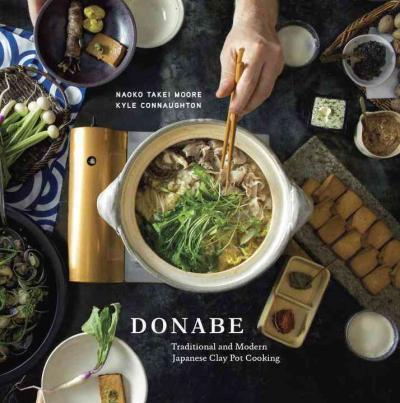
A cookbook focused on authentic Japanese clay-pot cooking, showcasing traditional recipes as well as updates on classics, with background on the origins and history of Donabe. Japanese clay pot (donabe) cooking has been refined over centuries into a versatile and simple, one-vessel method of preparing food that utilizes a variety of techniques such as steaming, simmering, smoking, and pressure frying.
Shelf: 596.21 MOO
Donabe : classic and modern Japanese clay pot cooking.
by Naoko Takei Moore, Kyle Connaughton ; photography by Eric Wolfinger.
First edition.
Berkeley, Calif. : Ten Speed Press, 2015.
xviii, 307 pages : color illustrations ; 24 cm.
Includes bibliographical references and index.
Text in English.
ISBN: 978-1-60774-699-7
Table of contents:
Classic-style donabe.
Double-lid donabe rice cooker : Kamado-san.
Donabe for soup and stew : miso-shiru nabe.
Tagine-style donabe : Fukkura-san.
Donabe steamer : mushi nabe.
0 notes
Text
Tweeted
Donabe Classicand Modern Japanese Clay Pot Cooking: https://t.co/lUXE9a7evY via @YouTube
— News Hub (@videobookinfo) September 12, 2017
0 notes
Text
Steal This Look: A Restaurant Supply Kitchen in Tokyo
One of our all time favorite projects at Remodelista is the Setagaya Tokyo Apartment, designed by Naruse Inokuma Architects. The deconstructed industrial kitchen is made from concrete blocks, larch plywood, and stainless steel and outfitted with an eclectic mix of Japanese kitchenware. Here, we’ve dissected the dining room/kitchen for a list to borrow from.
Above: The apartment is characterized by accidental beauty: After stripping wallpaper the architects discovered the gray wall marking but left the patina as a feature rather than covering it up.
Above: A larch plywood countertop and open shelves surround the stainless steel sink. On the far end of the kitchen sits a cooktop, vent, and undercounter refrigerators from a restaurant supply store.
Above: A few small appliances and Japanese ceramic dishes fill the open shelving.
Above: A view into the living area, with tatami matting.
Living/Dining
Above: Part of the WAC track lighting system is the 104LED Line Voltage Track Head (shown); $75 each at YLighting. For more on WAC systems, see YLighting. Another option is the Summit ACLED Beamshift Line in white.
Above: The Karup Tatami Mat is made of rice straw with a black band; €114.57 ($122) at Futo Nota.
Above: The Leviton Standard Size Stainless Steel Wallplate is $4.45 on Amazon.
Above: The 10L Godefroy de Virieu Flowerpot is $27.85 at Merci.
Furniture
Above: The Series 7 Chair by Arne Jacobsen, shown in black-colored ash, is $518 at Design Within Reach.
Above: From Ohio Design in San Francisco, the streamlined Parsons style Noi Table has a metal base and the option of different plywood tops; $749-$1,349 at Ohio Design. Another option is Room & Board’s Parsons Extension Table for $1,999.
Above: The Jacobsen Dot Stool in walnut veneer is $317 at Hive Modern.
Large Appliances
Above: Designed for use in commercial kitchens, the Universal Standard Exhaust Hood is made of stainless steel and measures 48 inches wide, 36 inches deep, and 24 inches high; $593.51 at Elite Restaurant Equipment.
Above: The GE Monogram 36-Inch Induction Cooktop is $2,999 at AJ Madison.
Above: The True (TUC-72) 72-Inch Undercounter Refrigerator is $3,018 at Webstaurant Store.
The Kitchen Sink
Above: The Grohe Starlight Pull-Down Faucet is $381.24 at Kitchen & Bath Authority. For more ideas, see our post 10 Easy Pieces: Architects’ Go-To Modern Kitchen Faucets.
Above: Something similar to the custom stainless sink and counter at the apartment is the Lustertone Stainless Single Bowl Sink Top from Elkay; $2,177 at Elkay. For more on stainless sinks, see our post 10 Easy Pieces: Stainless Steel Kitchen Sinks.
Above: Muji’s PET Rectangular Pump Bottle, shown in olive green, is popular for storing hand soap in the bath or, as seen here, in the kitchen; $5 each at Muji.
Above: The Stainless Steel Bottle Rack is $13 at Muji. For more, see our post 10 Easy Pieces: Countertop Dish Drainers.
Appliances
Above: The Japanese Balmuda Steam Oven Toaster is $345.46 on Amazon.
Above: For a non-glamorous microwave, GE’s White Countertop Microwave Oven (JEM3072DHWW) is $119 at ABT.
Above: Source a vintage Braun (KMM30) Coffee/Espresso Mill in white, now discontinued, on eBay and on Etsy.
Accessories
Above: Kaikado Tea Canisters are available in copper, brass, and tin (shown) with prices ranging from $140 to $185 at Tortoise General Store.
Above: The Donabe Fukkura San is made from special clay from Iga in the Mie Prefecture known for its ability to withstand high heat and rapid temperature change without cracking; $130 at Tortoise General Store.
Above: A polka dot Ramen/Rice Bowl is available at Furari Shop in Japan for ¥3,240 ($29).
Above: The Ash Glaze Bowl by artist Shinji Hidaka is $29.90 at Analogue Life.
For more open kitchens, see our posts:
Steal This Look: The Ultimate Staff Kitchen in New York
Steal This Look: A Scandi-Style Kitchen in a Canadian Cabin
Steal This Look: Smart Storage in a Swedish Kitchen
from garage2 http://ift.tt/2kmnSk5 via great info
0 notes